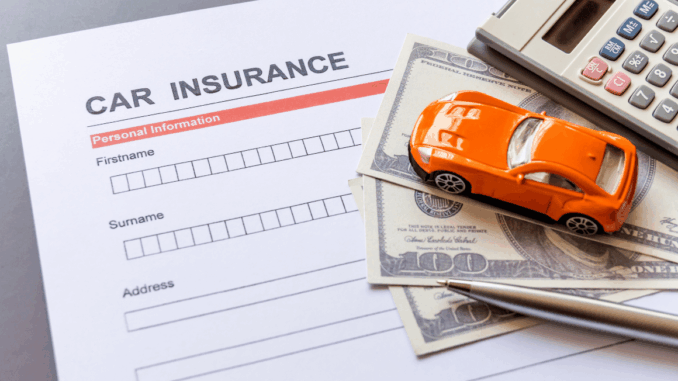
When shopping for auto insurance, it’s easy to get overwhelmed by the different types of coverage available. However, liability insurance stands out as the single most essential component of any car insurance policy. Whether you’re a seasoned driver or buying your first policy, understanding liability coverage is crucial to protecting yourself financially and legally on the road.
In this post, we’ll break down what liability coverage includes, why it’s critical, and how to determine the right amount for your needs.
What Is Auto Liability Coverage?
Auto liability insurance pays for damages or injuries you cause to others when you’re at fault in a car accident. It does not cover damage to your own vehicle or injuries to yourself—that’s what collision, comprehensive, or medical coverage is for.
Liability coverage is typically broken down into two primary parts:
1. Bodily Injury Liability (BIL)
This covers the medical expenses, rehabilitation costs, lost wages, and even legal fees if you cause injuries to another person in an accident. In severe cases, this can also cover long-term disability or death-related claims.
2. Property Damage Liability (PDL)
This covers the cost of repairing or replacing property you damage in an accident, such as:
- Another person’s vehicle
- Fences, walls, or buildings
- Public property like signs or lamp posts
Why Is Liability Coverage So Important?
Even a minor car accident can result in significant costs—and if you’re at fault, those costs are your responsibility. Without adequate liability coverage, you could face:
⚠️ Serious Financial Consequences:
- Medical bills can easily run into the tens or hundreds of thousands of dollars.
- Lawsuits can lead to wage garnishment, liens on property, or seizure of assets.
- Property repairs might involve high-end vehicles, luxury items, or costly public infrastructure.
Liability coverage ensures you’re not personally paying out-of-pocket for these expenses, shielding your savings, income, and personal assets.
Understanding State Minimums vs. Adequate Coverage
Every state in the U.S. requires drivers to carry a minimum amount of liability insurance. These are expressed as split limits like 25/50/25, which means:
- $25,000 per person for bodily injury
- $50,000 per accident for bodily injury
- $25,000 per accident for property damage
But here’s the problem:
State minimums are often not enough in a serious accident. If you cause a multi-car pileup or injure someone severely, medical bills and legal costs can far exceed the minimum.
Real-World Example:
If you’re liable for $150,000 in damages but your policy only covers $50,000, you’re responsible for the remaining $100,000 out-of-pocket.
How to Choose the Right Liability Coverage
Choosing the right liability limits depends on your financial situation, risk tolerance, and driving behavior. Here are key factors to consider:
✅ 1. Evaluate Your Assets
If you own a home, savings, retirement accounts, or investments, you have more to lose in a lawsuit. Consider higher limits like 100/300/100 or more.
✅ 2. Think About Your Risk Exposure
- Drive in high-traffic areas?
- Commute long distances daily?
- Live in a litigious state?
If so, you’re more likely to be involved in or sued for a serious accident.
✅ 3. Balance Cost vs. Protection
Higher limits come with higher premiums, but the additional cost is usually minimal compared to the level of protection. An extra $10–$20 per month could give you hundreds of thousands more in coverage.
Additional Coverages to Strengthen Your Liability Protection
While basic liability is foundational, certain add-ons or related policies offer even more comprehensive protection:
🛡 Umbrella Insurance
A separate policy that provides excess liability coverage beyond your auto and home insurance limits—often starting at $1 million. Ideal for high-net-worth individuals or anyone with significant assets.
🏥 Medical Payments Coverage (MedPay)
Covers small medical expenses for you and your passengers, regardless of who was at fault. Useful in states without Personal Injury Protection (PIP) requirements.
🚑 Personal Injury Protection (PIP)
Mandatory in some no-fault states, PIP covers medical bills, lost wages, and other related expenses for you and your passengers, no matter who caused the accident.
Final Thoughts: Don’t Cut Corners on Liability Coverage
Liability coverage is not just a legal requirement—it’s financial self-defense. While it may be tempting to choose the cheapest policy to save a few dollars, skimping on liability limits can expose you to devastating financial risk.
💡 The Bottom Line:
- Aim for higher-than-minimum coverage to protect yourself from lawsuits and major claims.
- Review your policy annually or whenever your financial situation changes.
- Consult with an insurance professional to assess your risk profile and make informed choices.
Protect your future. Invest in adequate liability coverage today.
Need help comparing liability options or understanding your current coverage? Drop a comment or reach out—we’re here to help you make confident, informed decisions.
Leave a Reply